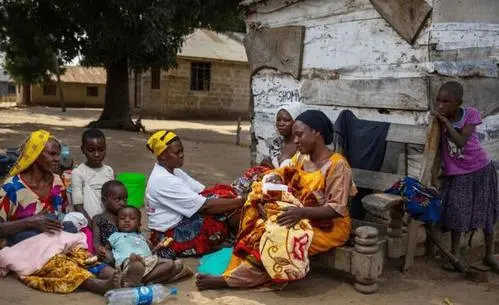An Expert Explains: How China eliminated malaria and the road ahead for India
专家解释中国如何消除疟疾以及印度的未来之路
In the past two decades, path-breaking achievements have been made to eliminate malaria. Globally, with scientific advancement new knowledge on malaria parasites, insights into vector biology and newer control strategies have helped target interventions resulting in substantial transmission reduction leading to disease elimination.
As per the Global Malaria Report 2020 by the World Health Organization (WHO), in 2019 an estimated 229 million malaria cases and 409,000 deaths in 87 malaria-endemic countries are recorded, with a large concentration of the total malaria burden (94%) in Africa. India shared 2% of the total global malaria cases in 2019.
过去20年来,人类在消除疟疾方面取得突破性进展。在全球范围内,随着科学的进步,关于疟疾寄生虫的新知识、对病媒生物学的深入了解和更新的控制战略有助于制定针对性的干预措施,从而大幅减少传播,进而消除疾病
世卫组织发布的报告显示,2019年87个疟疾流行国家记录了约2.29亿疟疾病例,40.9万人死亡。如今全球绝大部分疟疾病例集中在非洲(94%),而印度占到2%。

Since 1900, 127 countries have registered malaria elimination. In 2021, two countries El Salvador on February 25 and China on June 29 were declared malaria-free by the WHO.
1900年以来,登记消除疟疾的国家已达127个。2021年,世卫组织分别在2月25日和6月29日宣布萨尔瓦多和中国消除疟疾。
This is definitely not an easy task. It needs proper planning and a strategic action plan based on the local situations. All these countries followed the exsting tools and strategies to achieve the malaria elimination goal. The main focus was on surveillance.
这绝对不是一项轻而易举的任务,需要适当规划和因地制宜的统筹安排行动。
所有这些国家都遵循现有工具和战略,以实现消除疟疾的目标。其中监测是重中之重
How did China eliminate malaria?
China followed some specific strategies, namely strong surveillance following the ‘1-3-7’system: malaria diagnosis within 1 day, 3 days for case investigation and by day 7 for public health responses.
Molecular Malaria Surveillance for drug resistance and genome-based approaches to distinguish between indigenous and imported cases was conducted. All borders to the neighbouring countries were thoroughly screened to prevent the entry of unwanted malaria into the country.
那中国是如何削除疟疾的?
中国采取了具体策略,遵循强有力的“1-3-7”监测体系:1天内完成疟疾病例诊断,3天内完成病例调查,7天内采取公共卫生响应措施。
中国还对疟疾开展抗药性分子检测,并采用基于基因组的方法区分本土病例和输入病例。而且,中国把与邻国的所有边境地区都彻底筛查,以防止疟疾(从境外)进入这个国家
What is the current scenario of malaria in India?
India has a great history of malaria control. The highest incidence of malaria occurred in the 1950s, with an estimated 75 million cases with 0.8 million deaths per year.
The launch of National Malaria Control Programme in 1953 and the National Malaria Eradication Programme in 1958 made it possible to bring down malaria cases to 100,000 with no reported deaths by 1961. This is no doubt a great achievement has been made so far.
But from a nearing stage of elimination, malaria resurged to approxmately 6.4 million cases in 1976. Since then, confirmed cases have decreased to 1.6 million cases, approxmately 1100 deaths in 2009 to less than 0.4 million cases and below 80 deaths in 2019.
India accounted for 88% of malaria cases and 86% of all malaria deaths in the WHO South-East Asia Region in 2019 and is the only country outside Africa among the world’s 11 `high burden to high impact’ countries.
印度目前疟疾情况又如何?
印度有长久的抗疟历史。最高发病率出现在上世纪50年代,当时每年有7500万病例,80万人死亡。
1953年和1958年启动的国家疟疾控制方案和国家消灭疟疾方案使得到1961年疟疾病例减少到100000例,没有死亡报告。这无疑是迄今为止取得的巨大成就。
然而就在接近消除的阶段,1976年病例又激增到640万例。自那以来,确诊病例减少到160万例,2009年约1100例死亡,2019年减少到不到40万例,死亡人数减少到80例。
2019年,印度占世卫组织东南亚区域疟疾病例的88%和疟疾死亡总人数的86%,印度是全球11个疟疾“高负担”国家中唯一的非洲以外国家
The road ahead for India:
India is a signatory to National Framework for Malaria Elimination (NFME) 2016-2030 aiming for malaria elimination by 2030. This framework has been outlined with a vision to eliminate the disease from the country which would contribute to improved health with quality of life and poverty alleviation.
India stands at a very crucial stage. The present challenge is the detection of asymptomatic afebrile cases in most endemic areas.
印度未来的道路
印度是致力于2016-2030年消除疟疾国家框架(NFME)的签署国,目标是到2030年消除疟疾。在概述这一框架时,设想在该国消灭这一疾病,这将有助于改善健康、提高生活质量和减轻贫困
印度正处于一个非常关键的阶段。目前的挑战是在大多数流行地区发现无症状发热病例。
India has to quickly overcome this and make the elimination process back on track and put all efforts to make India malaria-free by 2030.
印度须迅速解决相关问题,使疟疾消除进程重回正轨,争取到2030年成为无疟疾国家
(作者为印度国家疟疾研究所前专家苏珊塔·戈什)
以下是印度快报读者和youtube网友的评论:
Benudhar
Great thought and approach by Dr S.K Ghosh, together we can do it. Research and science is not a single person work it's need mass and group of work to save our nation and service our motherland.
戈什的想法和做法是可取的。我们一起努力,是可以做到消除疟疾的。研究和科学不是靠单枪匹马能行的,而是需要群众性的工作,才能救亡图存,报效祖国。
T.K.Ramkumar
Oh!Chinese Are More Deciplined.We Need To Learn.No Revenge Indulging!Like The PM Said.
哦,中国人更有纪律性。我们需要向中国人学习。
Prateik
India is not China. Indian newspapers should stop quoting China.
印度不是中国。印度报纸以后别引用中国的报道
REVOLUTIONARY PERSON
China is a rising superpower.
中国是崛起中的超级大国啊
Suraj Mondal
Country is very Serious
我们国家也是认真的
R B
India is a giver of lessons for billions of years. We dont need any lesson from china?
几十亿年来,印度一直言传身教他人。我们不需要中国的经验啦
naga prasad
India must fast change, otherwise retrograde, Israel, japan most respected advanced technology countries on earth
印度必须快速改变,否则就会倒退。以色列、日本是地球上最受尊敬的先进技术国家
FT GamerX
Great
太棒了
Tinkeshwar Miree
But how accurate thei reports can be? Can we trust China claim?
这些报告有多少真实性可言呢,我们能相信中国的报道吗
Giriraj Jonwal
Very soon chaina beat America
中国很快就能超越美国啊
Solaman Sk
We learn from China
好吧, 我们向中国学习吧
Dinesh Kumar
China is very powerful & great country
中国是非常强大,非常伟大的国家啊
此文由 三泰虎 编辑,未经允许不得转载!:首页 > 印度看中国 » 印媒:消除疟疾,为啥中国行而印度不行
 印度女孩:为什么印度永远无法像中国那样发展
印度女孩:为什么印度永远无法像中国那样发展 中国每年从印度赚取1000亿美元,如何阻止呢
中国每年从印度赚取1000亿美元,如何阻止呢 为什么印度永远无法像中国那样增长
为什么印度永远无法像中国那样增长 智能手机“中国+1”战略成功了吗?印度在手机出口方面迅速缩小与中国和越南的差距
智能手机“中国+1”战略成功了吗?印度在手机出口方面迅速缩小与中国和越南的差距 经济学家解释为什么印度永远无法像中国那样发展
经济学家解释为什么印度永远无法像中国那样发展 中国和印度,哪个国家更尘土飞扬
中国和印度,哪个国家更尘土飞扬 在中国进军南亚之际,谢赫·哈西娜访问印度
在中国进军南亚之际,谢赫·哈西娜访问印度 1990年,我们和中国几乎处于同一水平,如果一切顺利,印度未来30年能与中国一较高下
1990年,我们和中国几乎处于同一水平,如果一切顺利,印度未来30年能与中国一较高下